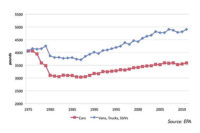Strategic Solutions: The 2012 Macroeconomic Environment




2012 started off with a series of hopeful developments: stock markets around the world were off to their best January in over a decade, and the Dow Jones Industrial Average currently stands at a level last seen before the collapse of Lehman Brothers in 2008. Federal Reserve Chairman Ben Bernanke has pledged to keep interest rates near 0% until the end of 2014 in an effort to stimulate the economy, and the unemployment rate in the U.S. is currently at a three-year-low of 8.3%, down from a peak of 10%.
ECONOMIC CHALLENGES
Despite the positive economic developments, major structural challenges remain for the global economy. “Kicking the can down the road” has become the most overused term since “man cave,” as the European Union (EU) continues to struggle to alleviate its members’ fiscal crises. The Greek fiscal crisis that ignited the current sovereign debt crises is approaching its third year. The austerity prescription for EU countries facing fiscal crises is not a panacea with a side effect of lowering the GDP of member states forced to undergo it; instead, most are facing multi-year recessions, very high unemployment and political unrest. The ultimate solution to the Euro crisis—a closer fiscal union among its members—does not appear to be in the cards in the near future.
The U.S. faces its own fiscal problems. Despite receiving a downgrade from Standard & Poor’s in 2011, it does not appear any closer to dealing with the structural deficits that have increased debt-to-GDP ratio to greater than 100%. The EU 27 in aggregate actually has a lower debt-to-GDP ratio than the U.S. at 82%, while Japan tops both with a debt level over 200% of its GDP. The effect of the towering debt levels accumulated in both the public and private sectors around the globe has a number of outcomes, but the most likely is a lower than normal GDP for an extended period of time as levels of indebtedness are decreased.
Last year’s consensus for real growth rate among economists was 2.5-3.5% for GPD in the U.S., but it turned out to be lower than the forecast at 1.7% in 2011. For the EU 27, real GDP for 2011 grew at a similar 1.6% rate, but is forecast to be less than 1% for 2012.
IMPLICATIONS FOR THE ADHESIVES AND SEALANTS INDUSTRY
The prospect of lower than normal economic growth rates have seen firms at all levels of the adhesives and sealants chain move to streamline operations through reduced capacity, staffing and inventories. Raw material prices increased substantially in 2011, in the range of 20% for formulators. Adhesive firms have yet to realize cost savings from the drop in natural gas prices in the U.S. (resulting from the use of hydraulic fracking to increase supply). But that should be a tailwind going forward for the industry. Other feedstock prices are also expected to abate in the first half of 2012.
Construction
The rate of construction spending in the U.S. continues to lag behind the rest of the economy. The industry continues to suffer from an existing housing supply overhang, with a substantial number of houses still in the foreclosure process. A large number of homeowners continue to default on their mortgages, decreasing the mobility of the workforce as workers cannot afford to move. In Las Vegas, for example, an estimated 70% of homeowners owe more on their mortgage than their house is worth. Governmental efforts to revive the residential housing market have not proven effective, and further legislation is doubtful given the election cycle.
Light Vehicle Market
With an average age of 10.8 years for cars and light trucks in the U.S., demand continues to increase as individuals who put off purchasing new automobiles in recent years are entering the market again. Industry analysts are expecting a 6% rise in auto and light truck sales in 2012, with the total number of units increasing to 13.6 million units.
LOOKING AHEAD
We hope the global economy in 2012 can build on the positive growth surprise during the second half of 2011. The IMF outlook for GDP growth in the global economy for 2012 is a 3.25%—down slightly from 2011’s rate of 3.8%. Of the 3.25%, advanced economies are projected to grow at 1.2%, while emerging economies are projected to grow 5.4%.
For more information, phone (513) 469-7555 or visit www.chemquest.com.
Looking for a reprint of this article?
From high-res PDFs to custom plaques, order your copy today!





